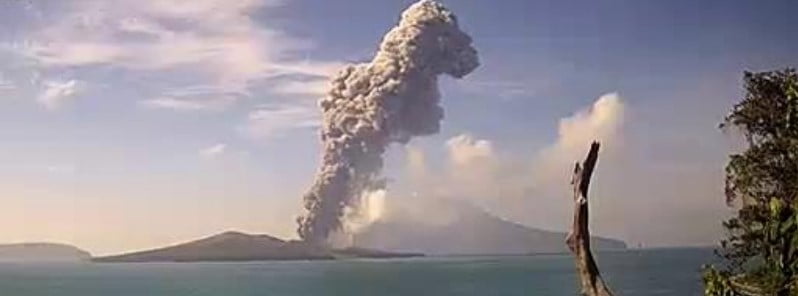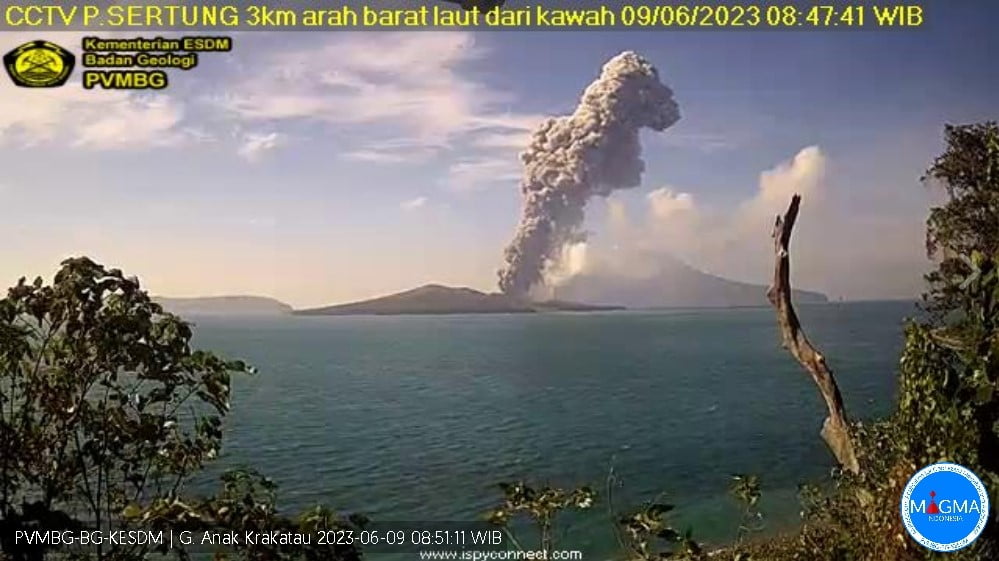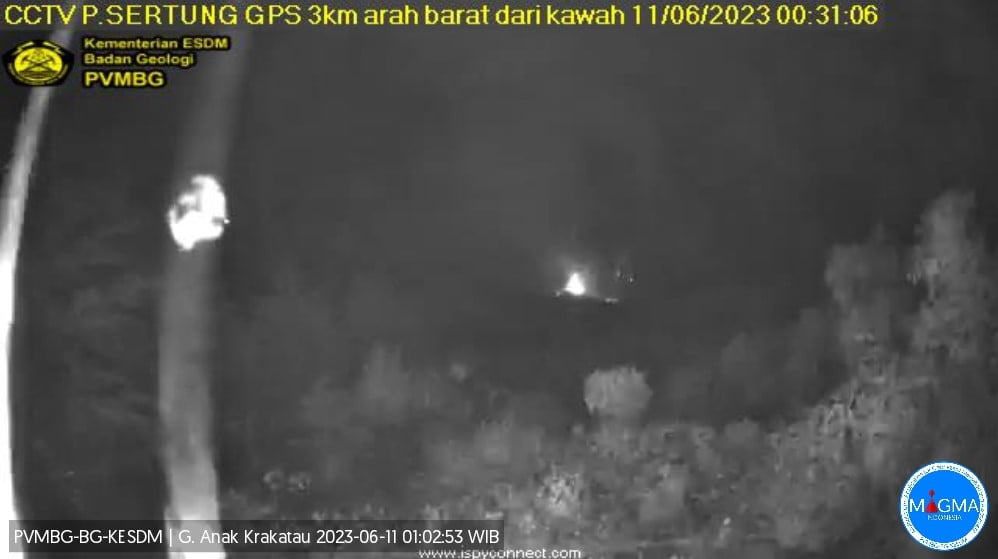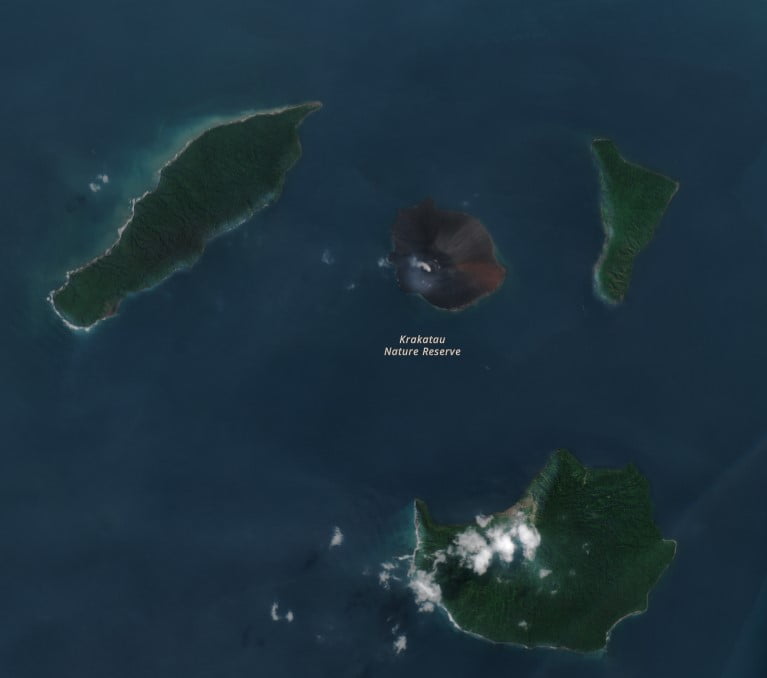Series of eruptions at Anak Krakatau, Indonesia

Anak Krakatau, the infamous volcano situated between the islands of Java and Sumatra, has experienced a series of significant eruptions since June 6, 2023. The Indonesian volcano, known as the “Child of Krakatau,” is located in the crater formed by the devastating eruption of Mount Krakatau in 1883, one of the deadliest and most destructive in recorded history.
According to the Pusat Vulkanologi dan Mitigasi Bencana Geologi (PVMBG), the first eruption in this series took place on June 6, at 07:34 UTC, sending a plume of ash ±500 m (±1 640 feet) high above the peak, reaching an altitude of ±657 m (±2 155 feet) above sea level. Subsequent eruptions occurred on June 8, with the second and the most impactful sending a column of ash ±1 000 m (±3 281 feet) high.1
By June 9, the activity escalated further, culminating in an eruption that sent a column of thick gray to black ash ±3 000 m (±9 842 feet) into the sky, nearly 3 157 m (±10 357 feet) a.s.l. over the strait separating Java and Sumatra.

The eruptions continued into June 10, with the most substantial of these expelling an ash column ±3 500 m (±11 483 feet) high, reaching ±3 657 m (±11 998 feet) a.s.l. The most recent eruption, as of June 11, sent ash ±2 000 m (±6 562 feet) high.

Deny Mardiono, an official from the Krakatau monitoring station, warned the public to refrain from any activities within a 5 km (3.1-mile) radius of the volcano’s crater. Following a sharp increase in volcanic activity in 2022, the status of Anak Krakatau was raised to the second-highest warning level.2
Recalling the 2018 incident, a major eruption caused the volcano’s crater to partly collapse, triggering a tsunami that led to the tragic loss of over 400 lives and injured thousands.

Geological summary
The renowned volcano Krakatau (frequently misstated as Krakatoa) lies in the Sunda Strait between Java and Sumatra. The collapse of the ancestral Krakatau edifice, perhaps in 416 CE, formed a 7 km (4.3 miles) wide caldera.
Remnants of this ancestral volcano are preserved in Verlaten and Lang Islands; subsequently Rakata, Danan and Perbuwatan volcanoes were formed, coalescing to create the pre-1883 Krakatau Island. Caldera collapse during the catastrophic 1883 eruption destroyed Danan and Perbuwatan volcanoes and left only a remnant of Rakata volcano.
This eruption, the 2nd largest in Indonesia during historical time, caused more than 36 000 fatalities, most as a result of devastating tsunamis that swept the adjacent coastlines of Sumatra and Java. Pyroclastic surges traveled 40 km (25 miles) across the Sunda Strait and reached the Sumatra coast.
After a quiescence of less than a half-century, the post-collapse cone of Anak Krakatau (Child of Krakatau) was constructed within the 1883 caldera at a point between the former cones of Danan and Perbuwatan. Anak Krakatau has been the site of frequent eruptions since 1927.3
References:
1 Anak Krakatau – PVMBG activity updates – June 6 – 12, 2023
2 Anak Krakatau volcano erupts, spews huge ash column – AFP – June 9, 2023
3 Anak Krakatau – Geological summary – GVP
Featured image credit: PVBGM

Commenting rules and guidelines
We value the thoughts and opinions of our readers and welcome healthy discussions on our website. In order to maintain a respectful and positive community, we ask that all commenters follow these rules.